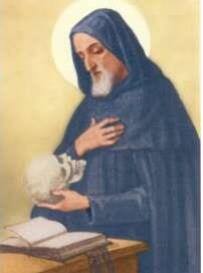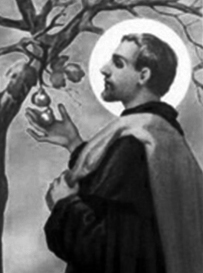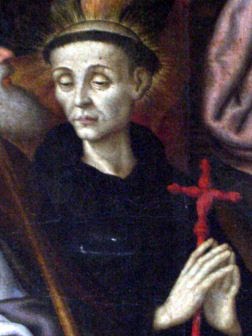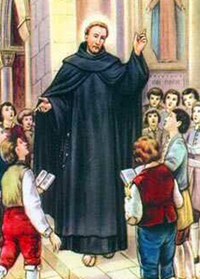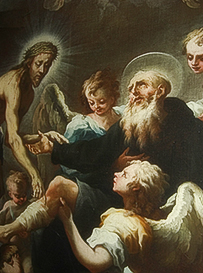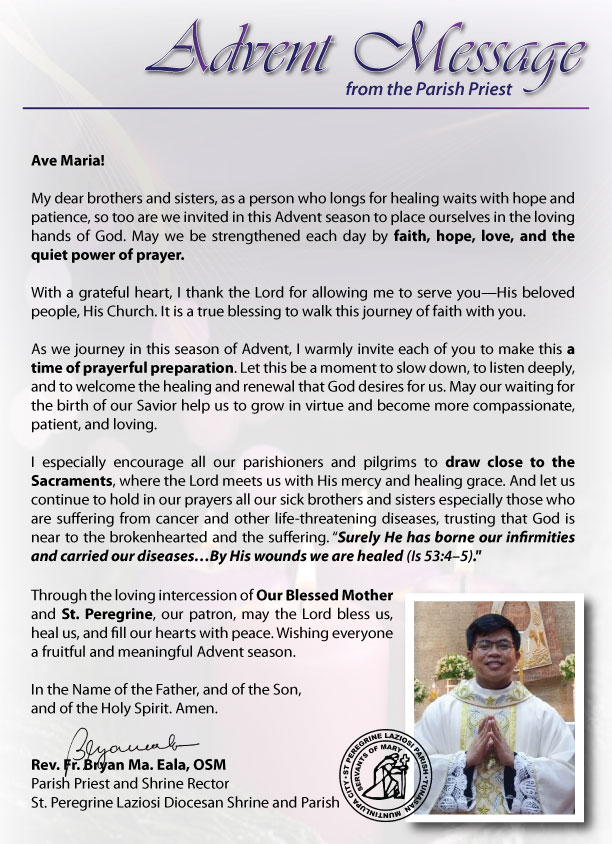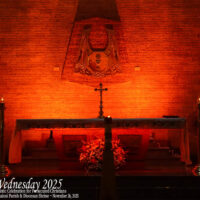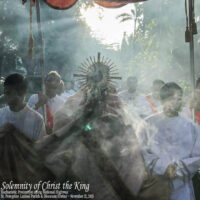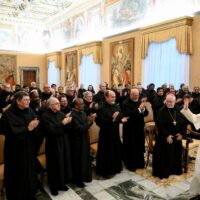Bonaventura was born in Pistoia, Italy, about 1250. Inspired to lead a holy life by the example of St. Philip, he entered the Servite Order and was ordained a priest.
As prior he showed great understanding and wisdom in directing the affair of the monastery. While he was prior of the monastery of Montepulciano he received the profession of St. Agnes, a young woman of that town, and helped her found a convent for cloistered Dominican nuns.
He died at Orvieto about 1315 and his cult was officially confirmed by Pius VII in 1822.
He did and said only those things he thought pleasing to God and useful to others.
Blessed Bonaventure was born in Pistoia, Italy, about the middle of the thirteenth century. Tradition relates his entrance into the Servite friars in this way: While the general chapter of the Order was being celebrated at Pistoia in 1276, our holy father Philip, the prior general, exhorted the citizens of that town, torn by internal strife and factions, to be reconciled to God and to one another. This young Ghibelline leader turned from his former ways to a life of penance at the words of the saint and asked Saint Philip to receive him into the Order. At his own request he was given the name Bonaventure. Michele Poccianti in his work Chronicon rerum Ordinis Servorum beatae Mariae Virginis (1567) describes his conversion in these words:
“Many were reconciled to the Lord by the words of Saint Philip; they left their homes and gave their possessions to the poor, choosing Philip as a father. They made their decision to serve the Virgin in poverty under the leadership of Philip. Among them was a certain Ghibelline leader who went to Philip right after he had finished speaking. Re humbly asked to be received into the Order of Servants and to begin, with the help of God, a life of penance. The saint accepted this violent and vengeful man’s request, but he first ordered him to ask forgiveness of each of his enemies and to return fourfold what he had stolen. To the admiration of all, Bonaventure fulfilled this evangelical command willingly and was received into the Order of Servants.”
Although the author of the Chronicon does not indicate the sources of his information and usually embellishes the facts in the course of his narration, Servite writers, including those of more recent times, give credence to his words and they believe the ” conversion of Bonaventure” approaches the truth.
Bonaventure remained a good friend of our holy father Philip, and when in 1285, Philip went to Pope Martin IV, then living at Perugia, to treat of problems relating to the survival of the Order and its approbation, he took as a companion Fra Bonaventure, whose wisdom and understanding he admired, along with Fra Lotharingus.
In the following years, Fra Bonaventure, because of bis foresight and wisdom, was made prior of the monastery in Bologna and then in Pistoia, and for several years was provincial of the Roman Province. The period when Bonaventure was prior of the monastery of Montepulciano is worthy of special mention. Men and women carne in great numbers to hear him preach and many entered the Order and received the habit from his hands. In 1306, at the order of Hildebrand, bishop of Arezzo, he laid the first stone of the church of Saint Mary built by Saint Agnes of Montepulciano. Bonaventure directed the construction of the convent and then gave the veil to Saint Agnes and her six companions and received their profession according to the Rule of Saint Augustine. He confirmed her election as Abbess and helped her in this office with his advice.
Bonaventure died at Orvieto about 1315 and immediately accounts of miracles attributed to his intercession spread. Pius VII confirmed his cult in 1822.
In 1915, the sixth centenary of his death, his body was moved to Pistoia where it is venerated to this day in the Servite church.
Prayer
Almighty God, grace our hearts with the gift of wise counsel so manifest in the life of Bonaventure, who was a spiritual guide for your dedicated Servants. We ask this through our Lord Jesus Christ.
 Diocese of Parañaque
Diocese of Parañaque

